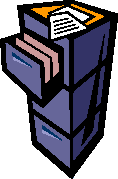I find that ProQuest is a great resource for finding primary sources on a variety of historical topics. ProQuest is a database that archives newspapers from 1800 to the present. I am quite familiar with ProQuest because I have used it in the past for research in other classes. ProQuest makes it possible to search for past news article to gain insight on how the world reacted to various events at the time it happened. It is also a great way to analyze how events turned out and become a part of our history today. The events I searched for using ProQuest were the Gulf of Sidra Incidents (which occurred in 1981 and 1989), where US Navy F-14 Tomcats shot down Libyan (Soviet-built) fighter jets in defense. Even though I was able to find informative articles for the incidents in ’81 and ’89, I noticed some advantages and disadvantages when it comes to using ProQuest to search for topics of the past.
The advantage of using ProQuest, when I searched for articles for the Gulf of Sidra incidents, was the ability to use numerous sources to find different kinds of information. Not only can you search using a variety of words and phrases, but you can now narrow or expand your search by searching for things other than articles. For example, ProQuest now allows you to search for editorials, letters, reviews, still photos, and even political comics. I personally enjoyed searching for news print advertisements featuring the F-14 Tomcat, some of which dating back to 1977. Being able to see these ads when the F-14 was first produced gives me an idea of how events played in history. If there were no ads in support of the F-14, the Gulf of Sidra incidents would have had a very different outcome (or not happen all together).
I then noticed a couple of disadvantages when it came to researching articles on the incidents. One disadvantage was that I could not view or download articles containing photographs. The photographs were likely removed due to copyright. I also noticed that noticed that the front pages of newspapers were displayed in B&W and not in color. I felt that, as it was said in class last week, that the photo-less and colorless articles lost their authenticity through digitization, as their actual paper counterparts would not be missing the qualities that made it what it was. Another disadvantage I noticed was that ProQuest was not as diverse as it could be. I found that all the newspapers were in the American perspective, from our major cities (LA, DC, NY, etc…). It would be interesting for ProQuest were to expand and access papers from smaller cities and towns (like Baltimore) to gain a different view on the Gulf of Sidra incidents. It would also be helpful it could access foreign papers for other views, since the incidents took place in a foreign country (in this case, Libya).
So, despite some disadvantages, ProQuest is a valuable source for obtaining primary newspaper sources, depicting our country past and how it happened.

